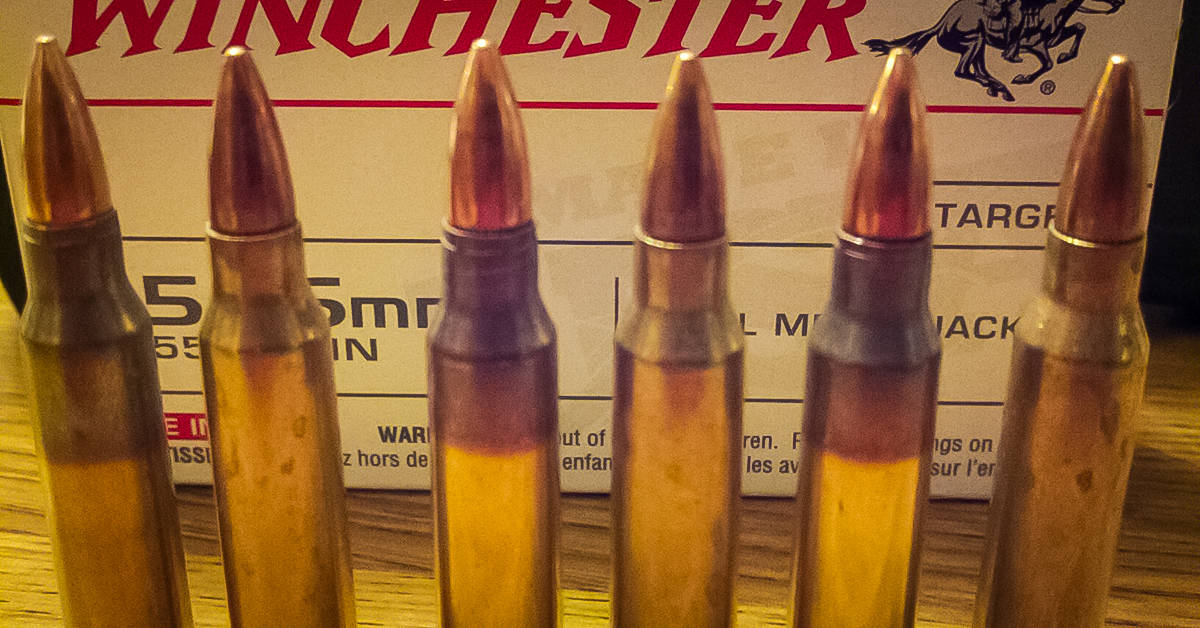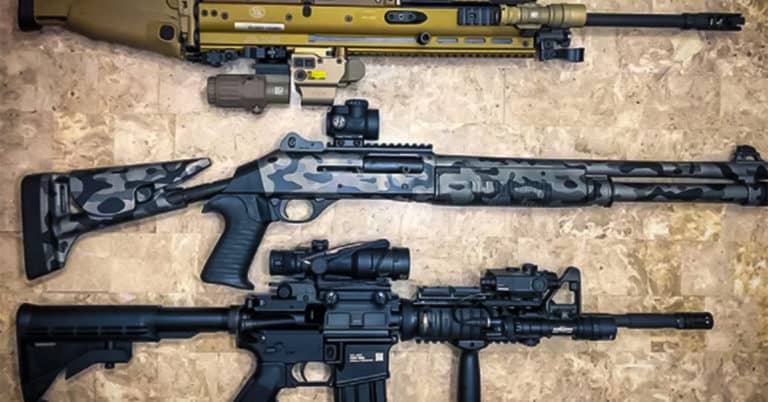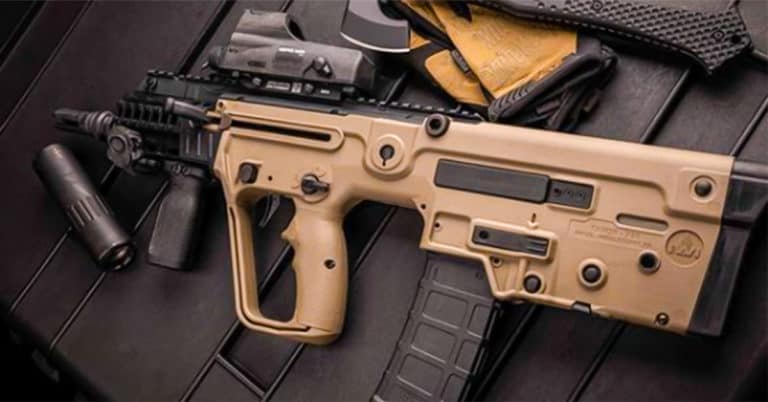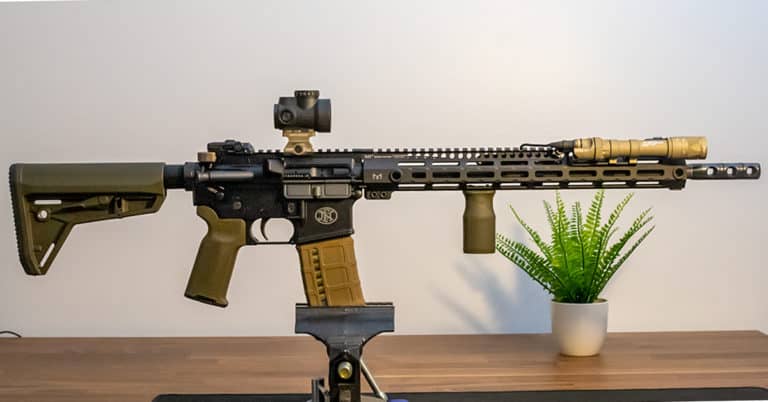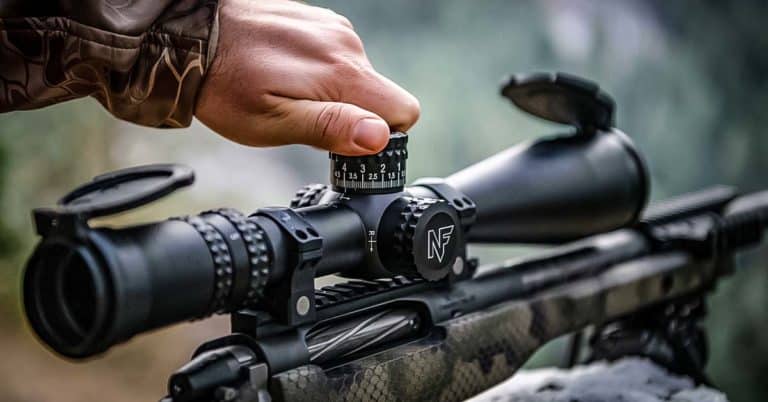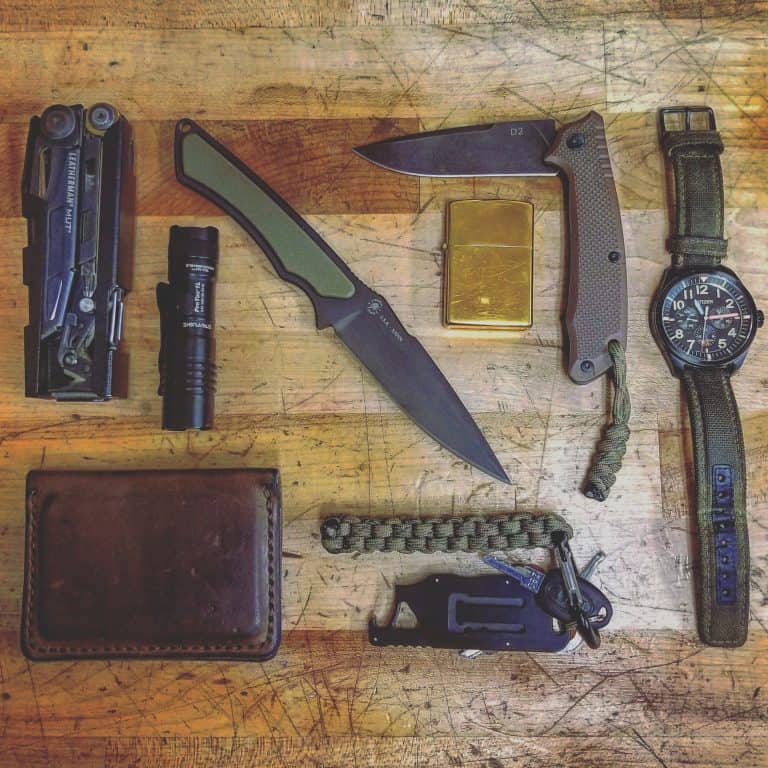5.56 vs .223 What’s The Difference (Full Comparison)
5.56 vs .223 may look identical, but they are different. The 5.56 and .223 rounds are used in rifles and are similar but not the same.
The 5.56 is popular with the military, and the .223 is popular with sportsmen. These two rounds are often used together and are similar in how they look and perform, but some small differences are important to know.
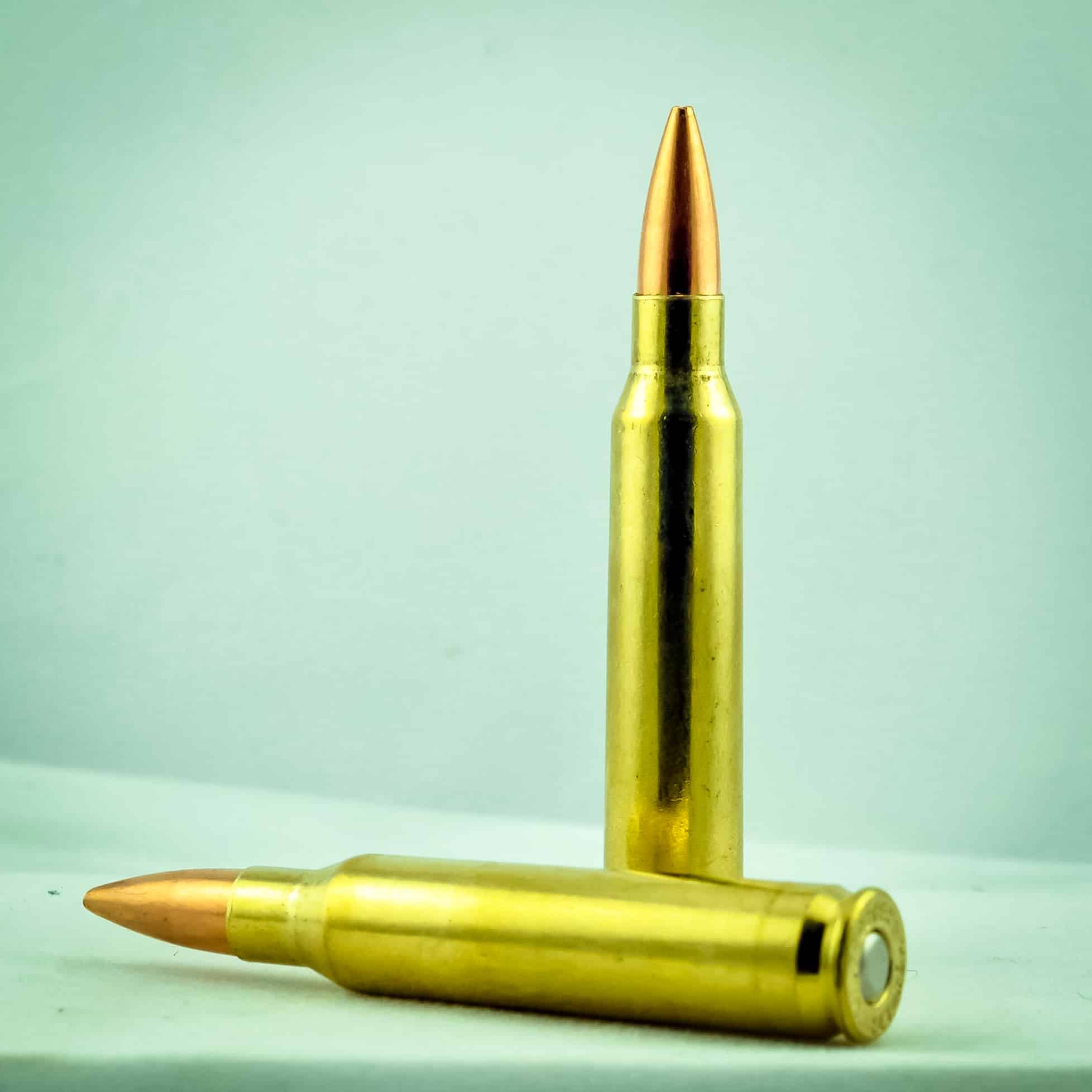
5.56 VS .223
Here is the quick answer.
The main difference between 5.56x45mm NATO and .223 Remington ammunition is that they are loaded to different pressure levels. 5.56x45mm NATO ammunition is loaded to higher pressures than .223 Remington ammunition.
As a result, 5.56mm NATO rounds are generally not safe to use in firearms chambered for .223 Remington, because they may cause the firearm to malfunction or even suffer damage. However, .223 Remington rounds are generally safe to use in firearms chambered for 5.56x45mm NATO.
There are also some differences in the dimensions of the two cartridges. 5.56x45mm NATO rounds are slightly longer and have a slightly larger diameter than .223 Remington rounds. This can cause feeding and extraction issues in some firearms chambered for .223 Remington but not designed to handle the longer and slightly wider 5.56mm NATO rounds.
5.56x45mm NATO and .223 Remington are similar, but not identical, and it is important to use the correct ammunition for your firearm to ensure safe and reliable operation.
History of 223 Remington
It is important to consider the historical context of any cartridge, and the 223 Remington is no exception. It is a modified version of the 222 Remington, both of which feature a .22 caliber bullet. However, the 223 Remington boasts improved performance compared to its parent cartridge.
The 222 Remington, the parent cartridge of the 223 Remington, was introduced by Remington in 1950 as a varmint round for small game hunting. It was designed for use in small, bolt-action rifles and quickly gained popularity due to its accuracy and low recoil.
However, the military soon saw the potential for the 222 Remington as a long-range target-shooting cartridge and began using it in various competitions.
In 1964, the 223 Remington was introduced as a modified version of the 222 Remington. It was designed to be used in the newly adopted M16 rifle, which eventually became the standard service rifle for the U.S. military.
The 223 Remington was chosen due to its low recoil, accuracy, and high velocity. It can also be used in semi-automatic and automatic rifles, making it a versatile cartridge for various military and civilian applications.

Today, the 223 Remington is widely used for both hunting and target shooting and is a popular choice for both beginner and experienced shooters.
It is known for its accuracy and low recoil, making it a suitable cartridge for long-range shooting and small-game hunting. Despite its small size, the 223 Remington is a powerful round that is capable of delivering significant terminal performance on game.
Overall, the 223 Remington has a rich history and has proven to be a reliable and effective cartridge for various applications. Its parent cartridge, the 222 Remington, played a significant role in its development and helped pave the way for its success.
5.56 vs .223 Pressure Difference
The 5.56 NATO has a higher pressure than the 223 round and is one of the two major differences.
The 5.56 NATO pressure is about 58,000 psi, and the 223 round is approximately 55,000 psi.
While that doesn’t seem like much on its face, a mere 3,000 psi, the case difference in the chamber balloons it to a 10,000 psi difference. This can cause barrel ruptures and could be dangerous for the shooter and the equipment.
5.56 vs .223 Case Difference
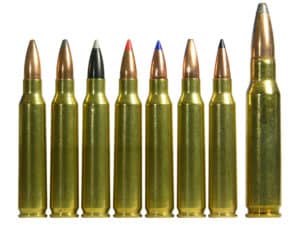
The 5.56 NATO cartridge exhibits a higher chamber pressure than the 223 Remington, with a maximum pressure of approximately 58,000 psi compared to 55,000 psi for the 223 Remington.
While the difference in maximum pressure may seem small at first glance, the difference in chamber pressure between the two cartridges can be significant, with the 5.56 NATO cartridge experiencing a chamber pressure of approximately 10,000 psi higher.
This increased pressure can potentially lead to barrel ruptures and pose a risk to the shooter and equipment.
Therefore, it is essential to ensure that firearms are properly rated for the specific cartridge being used and that proper safety measures are followed when handling high-pressure rounds.
Can I shoot 5.56 in a .223 Chambered Rifle?
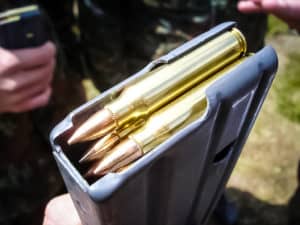
The pressure is the issue with firing a 5.56 round in a .223-chambered rifle. Yes, the round will go bang, and you may not notice issues firing just one round.
But due to the longer throat on the NATO chamber, you’ll reach pressures of 65,000 psi or more.
The normal pressure for a .223 round is 55,000 psi, and a 10,000 psi increase is NOT safe and could cause harm to the gun and the shooter.
Using 5.56 NATO cartridges in a firearm chambered for 223 Remington is generally not recommended.
The 5.56 NATO cartridge exhibits a higher chamber pressure, with a maximum pressure of approximately 58,000 psi, compared to a maximum pressure of approximately 55,000 psi for the 223 Remington.
While it is possible to fire a 5.56 NATO cartridge in a firearm chambered for 223 Remington, doing so can potentially lead to dangerous overpressure situations and result in damage to the firearm and pose a risk to the shooter.
The longer throat of a NATO chamber, which is designed to accommodate the slightly longer 5.56 NATO cartridge, can contribute to the increased pressure.
In such a scenario, the pressure can potentially reach levels of 65,000 psi or more, which is significantly higher than the normal pressure range for a 223 Remington cartridge.
It is crucial to bear in mind that an increase in pressure of this magnitude can be unsafe and can potentially cause harm to both the firearm and the shooter. Therefore, ensuring that the correct cartridge is used in the appropriate firearm is essential.
Cost of 5.56 vs .223
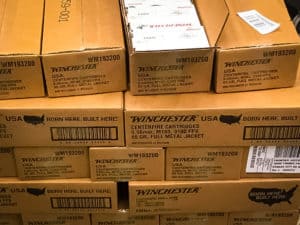
Generally, the cost of 5.56 NATO and 223 Remington cartridges is similar and largely dependent on market conditions and availability.
It is not uncommon for either cartridge to be more readily available at a given time, depending on factors such as production levels and demand.
It appears that 5.56 NATO ammunition may be more readily available than 223 Remington, although this can vary from location to location and is subject to change.
Ultimately, purchasing one cartridge over the other may be influenced by availability and personal preference.
Related Articles
Which should I buy 5.56 or .223 Remington?
Purchasing a firearm chambered in 5.56 NATO is often recommended due to its flexibility in the types of ammunition used.
As both 5.56 NATO and 223 Remington cartridges are similar in dimensions and design, a firearm chambered in 5.56 NATO can generally accommodate both types of ammunition.
This can be especially beneficial in situations where one type of cartridge may be more expensive or difficult to obtain.
By choosing a firearm chambered in 5.56 NATO, an individual can potentially have greater access to a range of ammunition options and can use whichever type of cartridge is more readily available or cost-effective at a given time.
What is .223 Wylde?

Bill Wylde developed the .223 Wylde chamber as a hybrid design that would allow for the safe use of 223 Remington and 5.56 NATO cartridges.
The .223 Wylde chamber can withstand the higher pressures of the 5.56 NATO cartridge while allowing the 223 Remington cartridge to perform at its best.
This versatility makes the .223 Wylde chamber a popular choice among competitive shooters, as it allows for a wide range of ammunition, including heavy 60-grain bullets commonly used in shooting competitions.
Many shooters appreciate the versatility of the .223 Wylde chamber and opt to purchase barrels chambered in this design.
One advantage of the .223 Wylde chamber is that it is generally not subject to the same price premium as other specialized chambers, making it a cost-effective option for those seeking the benefits of a hybrid design.
Overall, the .223 Wylde chamber is a good choice for those who wish to have the ability to use both 223 Remington and 5.56 NATO cartridges and achieve top performance with either.
5.56 VS .223 FAQ
What’s the main difference between the 5.56 NATO and the 223 Remington?
The main difference between the 5.56 NATO and the 223 Remington is the pressure they use and what they’re used for. The 5.56 NATO cartridge was made for the military and has higher pressure, while the 223 Remington was made for civilians and has lower pressure.
Can I use 5.56 NATO in a gun made for 223 Remington?
While it’s possible to use 5.56 NATO in a gun made for 223 Remington, it’s usually not a good idea. The higher pressure of the 5.56 NATO cartridge can cause problems in a gun that’s not made for it and could be dangerous.
Is the 5.56 NATO more powerful than the 223 Remington?
The 5.56 NATO cartridge has higher pressure and is usually better at stopping things on the battlefield. But the power of a cartridge also depends on other things like the bullet and how fast it’s going, and the 223 Remington can still be powerful for hunting small game.
Can I use 223 Remington in a gun made for 5.56 NATO?
Yes, you can usually use 223 Remington in a gun made for 5.56 NATO without any problems. The 223 Remington cartridge is similar in size to the 5.56 NATO and won’t cause any issues with the gun.
Is the .223 Wylde chamber a good choice for shooting both 5.56 NATO and 223 Remington?
The .223 Wylde chamber is a special type that works with the 5.56 NATO and 223 Remington cartridges. It can handle the higher pressure of the 5.56 NATO and also lets the 223 Remington perform at its best. So if you want to use both types of cartridges, the .223 Wylde chamber could be a good choice.
Further reading on Firstworldcrusader.com: Are you interested in learning more about guns and gear?
This list of the Best Red Dot Sights can help you choose the best optic for your rifle.
In addition, here are the Best AR-15 Upgrades & Accessories that can help you get more out of your primary battle rifle.

